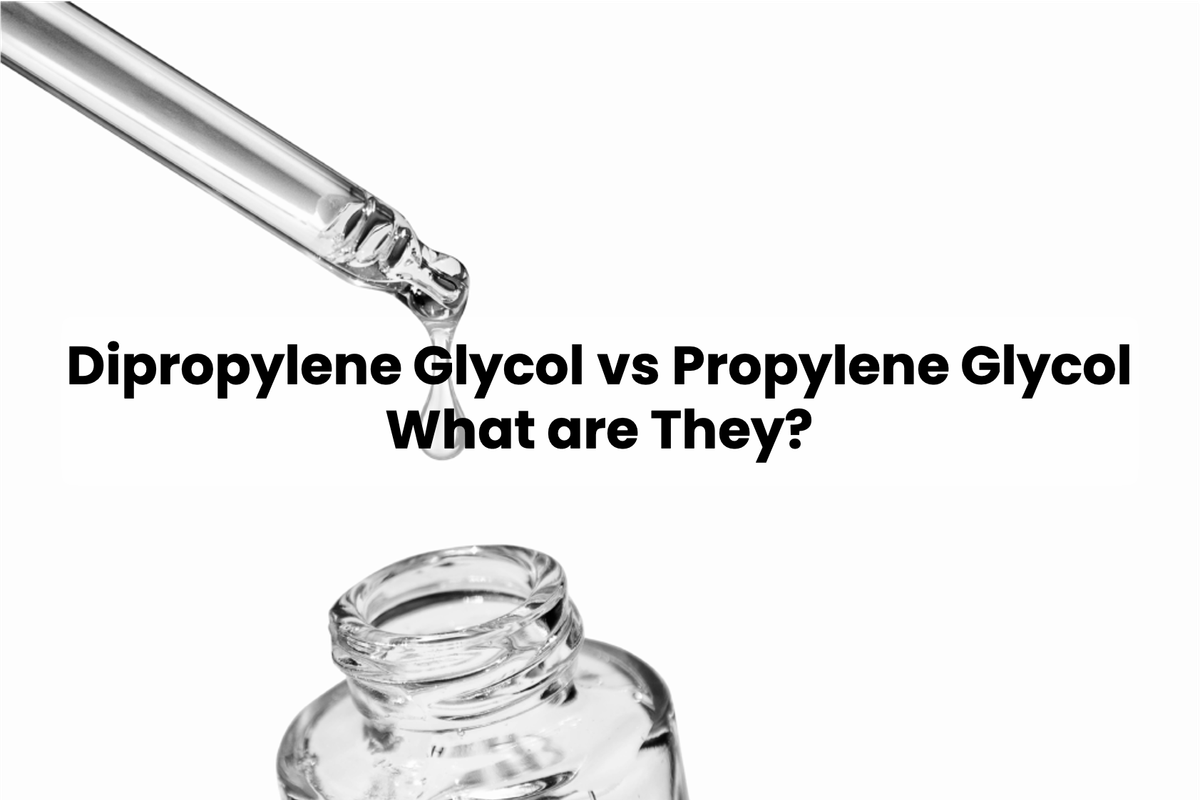
If you are from the cosmetics, perfume making and solvent industry, you should have heard of these two compounds: dipropylene glycol and propylene glycol. They look so similar to us, but what are the differences? Well, let’s find out together in this article.
What is Dipropylene Glycol (DPG)?

Dipropylene glycol or DPG (IUPAC Name: 4-Oxa-2,6-heptandiol or 4-Oxa-1,6-heptandiol) is an organic compound containing a mixture of three isomeric chemical compounds. It can be considered as a combination of two propylene glycol molecules occurs in these three isomeric forms. It has a chemical formula of C6H14O3 and it is a colourless and odourless liquid. It is fully miscible in water and is also miscible with many organic solvents.
What is Propylene Glycol (PG)?

Propylene glycol or PG (IUPAC Name: Propane-1,2-diol) is an organic compound containing two alcohol functional groups. It is classified as a diol, which is composed of two hydroxyl groups attached to different carbon atoms in the molecule. It has a chemical formula of C3H8O2 and it is a viscous, colourless, and nearly odourless with faintly sweet taste. It is fully miscible in water and is also miscible with many organic solvents.
Production Processes
In the industry, most of the propylene glycol is produced from the propylene oxide in high temperature. The process produces final product containing 20% PG and 1.5% DPG, and small amount of other glycols. After that, the product was sent to further purification processes separate individual compounds. As the amount of dipropylene glycol produced in final product is much lesser than propylene glycol, it is often referred as the byproduct of propylene glycol.
Chemical Properties
Both propylene glycol and dipropylene glycol belong to the glycol class of compounds. However, both of them has different molecular structure and hence different chemical properties. Propylene glycol has a lower boiling point and moderate melting point. PG is composed of two groups of alcohols. On the other hand, dipropylene glycol has a higher boiling point and lower melting point. It only contains negligible amounts of alcohol.
Usage and Applications
The applications of dipropylene glycol includes:
• Plasticizer and intermediate for industrial processes
• Solvent or carrier in fragrances and cosmetics
• Additive for perfume and personal care products
• Masking agent in cosmetics
• Humectant in skin care
• Texture enhancing
The applications of propylene glycol includes:
• Ingredients for production of polymers (up to 45% of global demand)
• Humectant for personal care and cosmetics
• Solvent in pharmaceuticals
• Solvent or carrier in fragrances and cosmetics
• Additive in e-liquid or fogging applications
• Preservative in food, cosmetics and etc
Overview
Dipropylene glycol and propylene glycol are two similar chemicals which are the members of the glycol class of compounds. The key difference between them is that the dipropylene glycol is a mixture of three isomers, whereas the propylene glycol is an organic compound having two alcohol groups. Both of them have different chemical properties and are considered as safer chemicals for human applications. Despite having different applications, both of them also have some similar applications such as usage in cosmetics and personal care as solvent or carrier.
